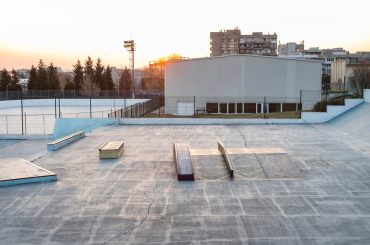Brick is an element in masonry construction that is used to make walls, pavements, and other elements. It is a rectangular block typically made of fired or sun-dried clay. Bricks are usually used to manufacture load-bearing walls. An Ideal brick must provide proper insulation against heat, cold, and noise. The heat and sound conductivity of a brick varies highly with its density and porosity. Bricks that are very dense and heavy conduct sound and heat at a greater rate. Bricks must be properly designed for them to be considered ideal and proper for construction purposes. They must be made in such a way that they are strong, light, and give adequate insulation. Bricks are a very durable and low-cost construction material. It also has high compressive strength and is also fire resistant. It can also resist weathering effects to an adequate level and is of low maintenance.
Brick bonds or bonding is the arrangement of bricks in a wall, column, or any structure. The bonds may have a decorative or structural function. The arrangement of bricks on a structure in a systematic way to ensure its stability and strength is called brick bonding. There are different brick bonds that are being used in today’s day and age. Bricks can be laid in a standing upright position, lengthwise along the wall or widthwise along the wall. There are three patterns that a brick bonding type must follow and those are as follows:
A. The load must be distributed throughout the structure to achieve the maximum required strength.
B. Structural stability must be ensured.
C. The desired aesthetic must be achieved.
Different brick bonds
There are so many different brick bonds that are available today. Some of them are used for structural purposes and some only for decorative purposes. Some brick bonds can also be used in both cases as they are aesthetically pleasing as well as has great structural strength. Although the primary purpose of brick bonds is to ensure that the masonry work is strong and stable, it can also have an artistic effect on the walls that the bonds are placed in. Different brick bonds are as follows:
Header Bond

This bond has courses of headers only which are offset by half a brick. It is usually used for round walls. It is not used in straight work as this bond is considered to be very weak.
Stretcher Bond

This bond has courses of stretchers. Usually used in walls that have half brick thickness. As it is constantly used in the last position, it is also referred to as the chimney bond.
English Bond
In this type of bond, the bricks are arranged in the alternate course of headers and stretchers. It is the strongest bond and it requires more facing bricks in comparison to other bonds. However, it is recommended to avoid continuous vertical joints. Queen closers are inserted near quoin headers to produce the overlapping of bricks.
English Garden Wall Bond
This type of bond is similar to an English bond but here for three courses of stretchers, one course of the header is provided. The headers are arranged in such a way that each course of the header is centered on the header in the course below. This bond helps to spread the lateral load and also uses a lot fewer facing bricks in comparison to an English bond.
English Cross Bond

In this bond, the courses of headers and stretchers are placed alternatively, with the courses being offset by half a brick. The stretchers are arranged in such a way that one course of the stretcher is centered on the joins between the course of stretchers below them. All the alternating courses of the stretcher are aligned with each other.
Flemish Bond

There are two types of Flemish bonds, namely, Double Flemish Bonds and Single Flemish Bonds.
In a Double Flemish bond, the headers and stretchers are arranged in alternate courses. The queen closer is placed next to the quoin header in every course to produce the lap. This type of bond is weaker than English bonds.
In a Single Flemish Bond, one course of double Flemish bond is placed on the face of the walls. The remaining of the wall is built in English Bond. This bond is used in walls that need high strength and a good appearance. However, this bond is not advisable for walls less than one and a half bricks thick.
Flemish Garden Wall Bond
This bond is arranged in such a way that one header is placed on three stretchers in each course. The headers are centered over the stretchers in the middle.
Monk Bond
This is a type of Flemish bond. This bond has two stretchers between headers in every course. The headers are placed between the joins of two stretchers in the course below.
Stack Bond
In this type of bond, the bricks are directly placed on top of each other with joins aligned together for the entire wall. The bricks used in this bond can be stacked vertically or horizontally. Due to the minimal bonding of the bricks caused by the alignment of joints, this bond is considered to be very weak and also, structurally unsound. This bond is hence used mostly for decorative purposes only.
Sussex Bond
Sussex Bond uses three stretchers and one header in every course.
Conclusion
It is now clear to us that different arrangement of bricks results in the creation of various different bonds that are used in the construction industry. These bonds are used to create walls, facades, pillars, and a variety of other structures. Brick bonds that provide great strength and are also considered to be aesthetically pleasing are considered to be good brick bonds. Good brick bonds are the most highly used brick bonds. The entire brickwork of a specific structure depends on the bonding of bricks. Thus, it is said that bond in brickwork is of the highest importance.






